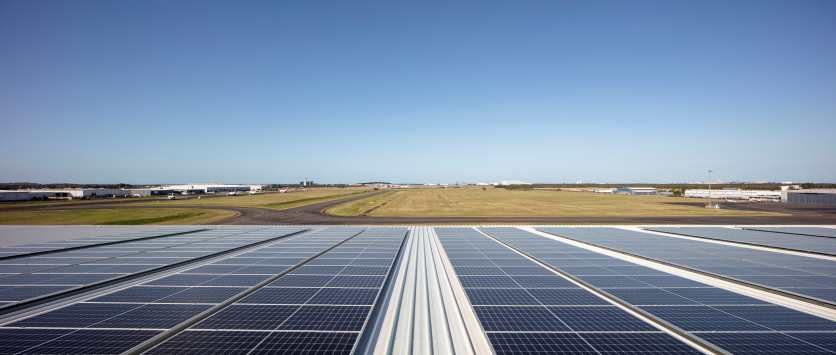Brisbane Airport has achieved a significant milestone in its sustainability journey by becoming one of the first Australian airports to reach Net Zero emissions for Scope 1 and 2 operations.
From January 1, 2025, the airport is now fully powered by 100% renewable-backed electricity, marking a pivotal moment in the aviation industry’s efforts to minimize its environmental impact.
This achievement ensures nearly 25 million annual passengers can travel with confidence, knowing that Brisbane Airport is committed to reducing its carbon footprint.
A Sustainability Leader
Brisbane Airport Chief Executive Officer Gert-Jan de Graaff highlighted the importance of the milestone:
“We are proud to have achieved this milestone. As a sustainability leader, we take our role in reducing our impact on the environment very seriously. But there is far more work to be done.”
De Graaff also emphasized the need to address emissions from aviation fuel, the largest source of carbon emissions in the sector.
Brisbane Airport continues to collaborate with the Australian Jet Zero Council and supports cutting-edge research, including the development of hydrogen-electric aircraft by Stralis, with a test flight planned for this year.
How Brisbane Airport Achieved Net Zero
The airport has reduced its Scope 1 and 2 emissions by 97% through:
- Purchasing 100% renewable-backed electricity from Stanwell, sourced from Queensland wind and solar farms.
- Expanding onsite solar capacity to 10 megawatts.
- Replacing 24 internal combustion engine fleet vehicles with electric alternatives.
The remaining 3% of emissions have been offset through native bush regeneration projects in southwest Queensland, facilitated by Tasman Environmental Markets.
Transformative Renewable Energy
The partnership with Stanwell marks a major milestone, delivering up to 185 GWh of renewable energy annually to power airport operations.
From baggage conveyors and air conditioning to runway lights and electric ground service equipment, the entire airport is now driven by renewable energy sources.
“This strategic partnership demonstrates demand for Queensland’s high-quality renewable energy as we shift to a reliable, affordable, and sustainable energy system,” said Queensland Treasurer and Energy Minister David Janetzki.
Stanwell CEO Michael O’Rourke echoed this sentiment, stating: “Brisbane Airport was our first customer for renewable energy, and this collaboration sets a benchmark for sustainability in the aviation industry.”
Highlights of Brisbane Airport’s Sustainability Journey
Brisbane Airport has consistently been at the forefront of sustainability innovation.
Key milestones include:
- 2010: Establishment of a 285-hectare Biodiversity Zone.
- 2014: Achieving Australia’s first Green Star Communities rating.
- 2018: Launching Australia’s largest electric bus fleet.
- 2021: Reducing energy consumption by 12% through AI-powered building management.
- 2023: Becoming the first Australian airport to achieve Airport Carbon Accreditation Level 4: Transformation.
- 2024: Completing successful tests of electric aircraft motors and transitioning 24 fleet vehicles to electric.
Looking Ahead
As Brisbane Airport continues to lead by example, it remains committed to pioneering sustainable practices.
This achievement of Net Zero emissions (Scope 1 and 2) sets the stage for future advancements, including ongoing collaborations with industry partners to tackle aviation fuel emissions and explore innovative technologies like hydrogen-electric aviation.
The airport’s dedication serves as an inspiration for the broader aviation industry, proving that ambitious sustainability goals are both achievable and essential for a greener future.
The post Brisbane Airport achieves a Net Zero milestone, A new era of sustainability? What more you need to know? appeared first on Travel And Tour World.


